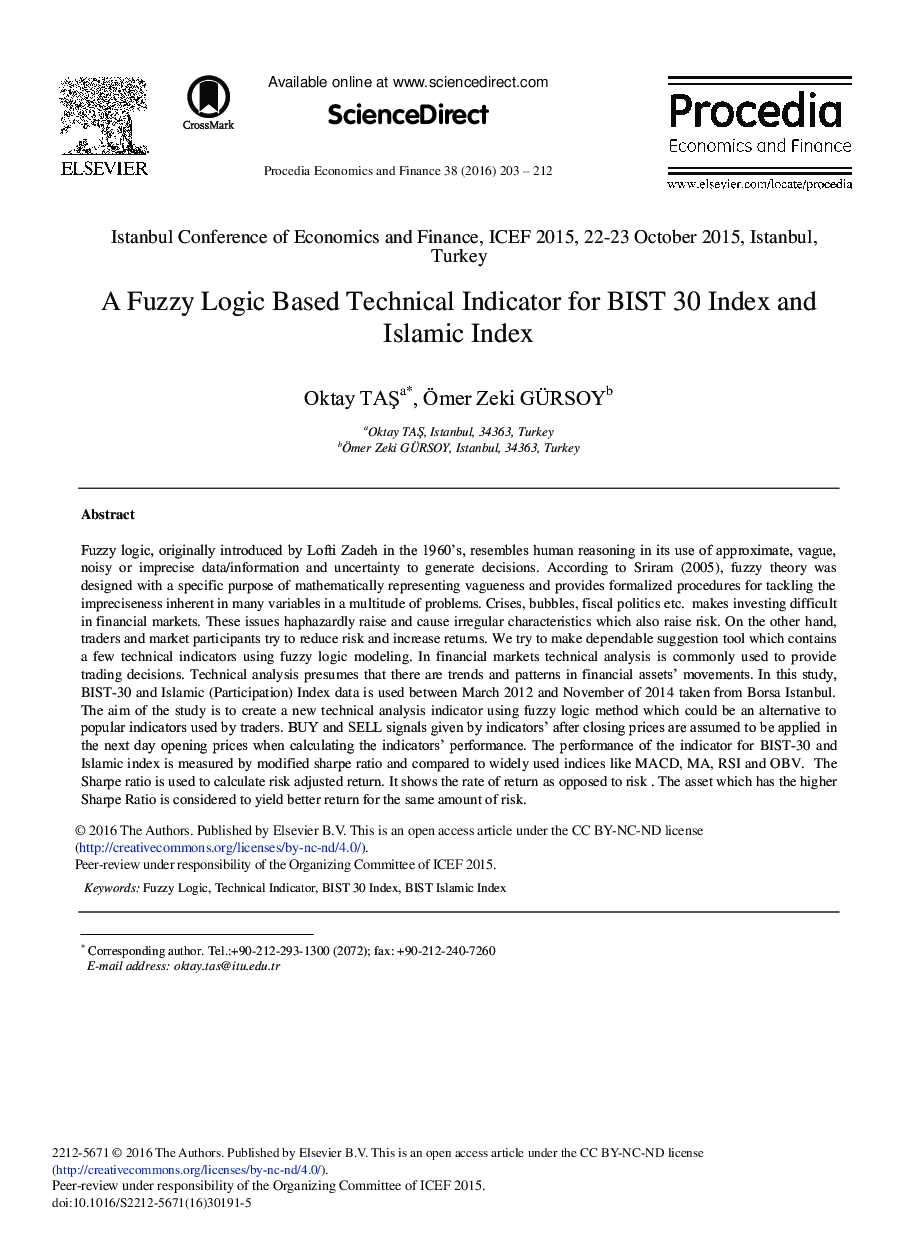| Article ID | Journal | Published Year | Pages | File Type |
|---|---|---|---|---|
| 982536 | Procedia Economics and Finance | 2016 | 10 Pages |
Fuzzy logic, originally introduced by Lofti Zadeh in the 1960's, resembles human reasoning in its use of approximate, vague, noisy or imprecise data/information and uncertainty to generate decisions. According to Sriram (2005), fuzzy theory was designed with a specific purpose of mathematically representing vagueness and provides formalized procedures for tackling the impreciseness inherent in many variables in a multitude of problems. Crises, bubbles, fiscal politics etc. makes investing difficult in financial markets. These issues haphazardly raise and cause irregular characteristics which also raise risk. On the other hand, traders and market participants try to reduce risk and increase returns. We try to make dependable suggestion tool which contains a few technical indicators using fuzzy logic modeling. In financial markets technical analysis is commonly used to provide trading decisions. Technical analysis presumes that there are trends and patterns in financial assets’ movements. In this study, BIST-30 and Islamic (Participation) Index data is used between March 2012 and November of 2014 taken from Borsa Istanbul. The aim of the study is to create a new technical analysis indicator using fuzzy logic method which could be an alternative to popular indicators used by traders. BUY and SELL signals given by indicators’ after closing prices are assumed to be applied in the next day opening prices when calculating the indicators’ performance. The performance of the indicator for BIST-30 and Islamic index is measured by modified sharpe ratio and compared to widely used indices like MACD, MA, RSI and OBV. The Sharpe ratio is used to calculate risk adjusted return. It shows the rate of return as opposed to risk. The asset which has the higher Sharpe Ratio is considered to yield better return for the same amount of risk.
